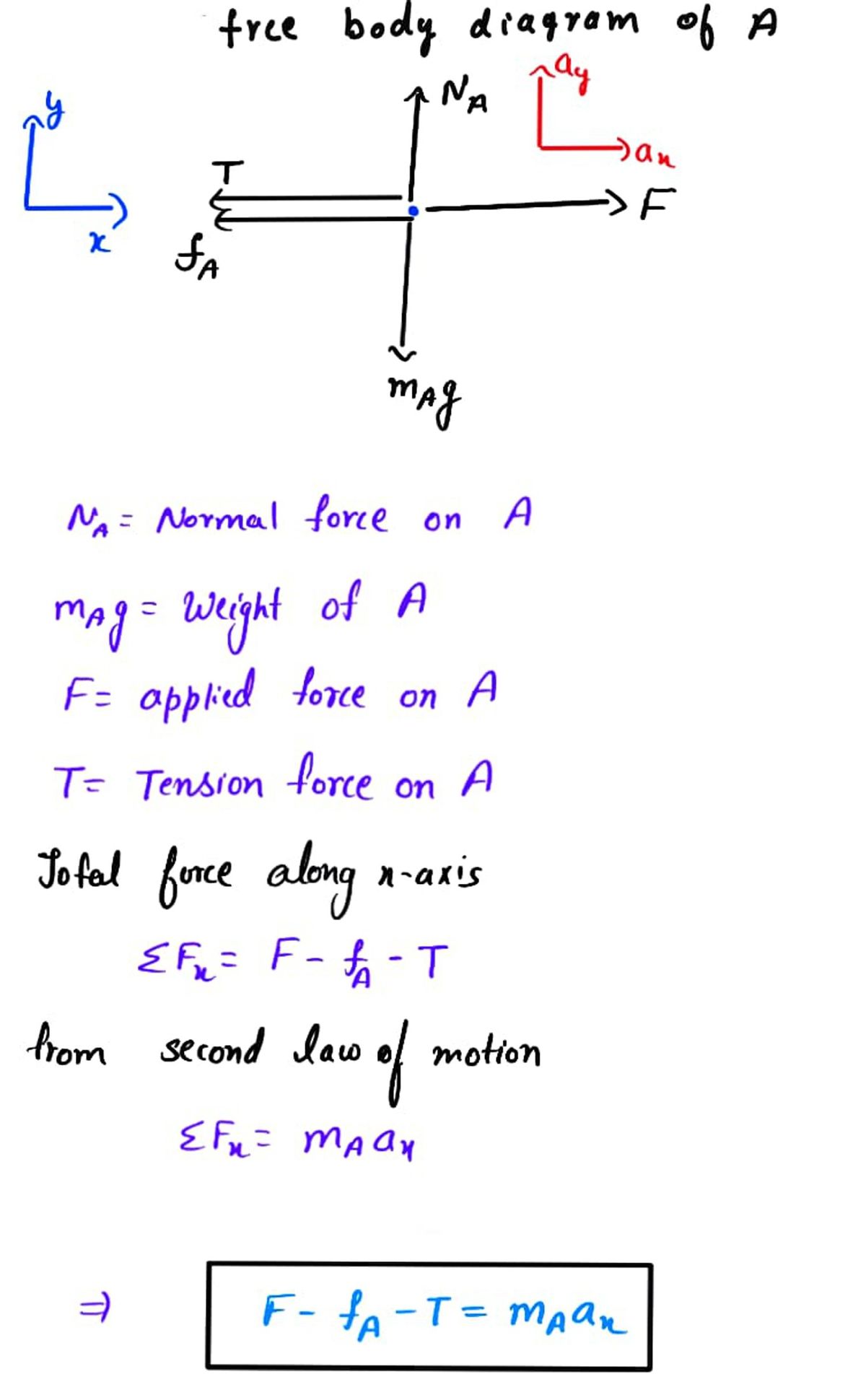- Set up the free-body diagram and the equations for Newton's 2nd law for each object along each axis. Assume friction is present between all surfaces and the coefficient of friction is different between the different surfaces. (Note you should have 2 free body diagrams) B A F
- Set up the free-body diagram and the equations for Newton's 2nd law for each object along each axis. Assume friction is present between all surfaces and the coefficient of friction is different between the different surfaces. (Note you should have 2 free body diagrams) B A F
College Physics
11th Edition
ISBN:9781305952300
Author:Raymond A. Serway, Chris Vuille
Publisher:Raymond A. Serway, Chris Vuille
Chapter1: Units, Trigonometry. And Vectors
Section: Chapter Questions
Problem 1CQ: Estimate the order of magnitude of the length, in meters, of each of the following; (a) a mouse, (b)...
Related questions
Question
please draw a free diagram

Transcribed Image Text:**Educational Content: Free-Body Diagrams and Newton's Second Law**
Set up the free-body diagram and the equations for Newton’s 2nd law for each object along each axis. Assume friction is present between all surfaces and the coefficient of friction is different between the different surfaces. (Note you should have 2 free-body diagrams)
**Diagram Description:**
The image shows two blocks labeled A and B. Block A is larger and situated directly to the right of block B. A force, labeled F, is applied to the right side of block A. Both blocks are resting on a horizontal surface.
**Instructions:**
1. **Create the Free-Body Diagram for Each Block:**
- For block B, consider the forces acting on it, including frictional forces and contact forces from block A.
- For block A, identify all the forces, including the applied force F, frictional forces, and the normal force.
2. **Formulate Newton's 2nd Law Equations:**
- Write equations for the forces along the horizontal axis (x-axis) for both blocks.
- Include frictional forces, using different coefficients for each surface.
3. **Considerations:**
- Distinguish between static and kinetic friction.
- Consider the interaction between blocks A and B.
These tasks will help you understand how forces interact between objects with friction and how to apply Newton's laws in such scenarios.
Expert Solution
Step 1

Step by step
Solved in 4 steps with 4 images

Knowledge Booster
Learn more about
Need a deep-dive on the concept behind this application? Look no further. Learn more about this topic, physics and related others by exploring similar questions and additional content below.Recommended textbooks for you

College Physics
Physics
ISBN:
9781305952300
Author:
Raymond A. Serway, Chris Vuille
Publisher:
Cengage Learning

University Physics (14th Edition)
Physics
ISBN:
9780133969290
Author:
Hugh D. Young, Roger A. Freedman
Publisher:
PEARSON

Introduction To Quantum Mechanics
Physics
ISBN:
9781107189638
Author:
Griffiths, David J., Schroeter, Darrell F.
Publisher:
Cambridge University Press

College Physics
Physics
ISBN:
9781305952300
Author:
Raymond A. Serway, Chris Vuille
Publisher:
Cengage Learning

University Physics (14th Edition)
Physics
ISBN:
9780133969290
Author:
Hugh D. Young, Roger A. Freedman
Publisher:
PEARSON

Introduction To Quantum Mechanics
Physics
ISBN:
9781107189638
Author:
Griffiths, David J., Schroeter, Darrell F.
Publisher:
Cambridge University Press

Physics for Scientists and Engineers
Physics
ISBN:
9781337553278
Author:
Raymond A. Serway, John W. Jewett
Publisher:
Cengage Learning

Lecture- Tutorials for Introductory Astronomy
Physics
ISBN:
9780321820464
Author:
Edward E. Prather, Tim P. Slater, Jeff P. Adams, Gina Brissenden
Publisher:
Addison-Wesley

College Physics: A Strategic Approach (4th Editio…
Physics
ISBN:
9780134609034
Author:
Randall D. Knight (Professor Emeritus), Brian Jones, Stuart Field
Publisher:
PEARSON